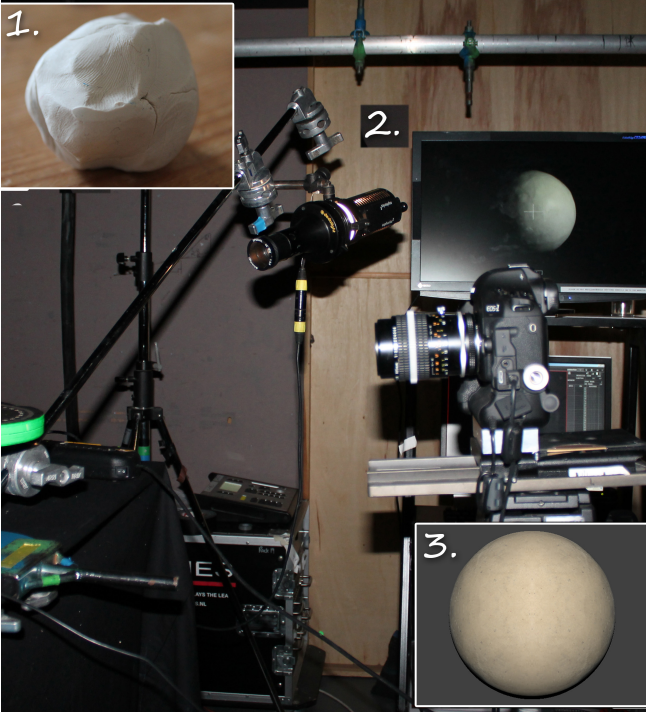Aardman Animations is famous for its plasticine-based, stop-motion style of animation. Much of the animation is created on set but there are times when plasticine objects need to be generated computationally. Currently, to model
plasticine computationally a standard surface shading material is used and adapted to behave as similarly to plasticine as possible.
Plasticine is an unusual material with distinct reflective properties. We wish to make realistic-looking, computationally generated plasticine based on the physical properties of the material. To do this the material needs to be carefully analysed. The analysis involves conducting experiments to measure the light reflected from a plasticine sample. Information about the amount of light reflected at each combination of light direction, viewing direction, and surface normal is stored in a table. Using this data we can reconstruct the plasticine material and approximate its behaviour by fitting mathematical models.
The best-fitting model is used to create a surface shader. This bespoke shader is based on the recorded properties of plasticine and provides a more physically accurate approximation than using a standard shader. This shader should react
to light more realistically to improve the quality of rendered images of plasticine objects.
CDE Alumni: Lindsey Howell
Academic Supervisor: Prof Peter Hall
Industry Supervisor: Philip Child
Industrial Research Partner: Aardman Animations Ltd.
Current Employment: Lindsey is a Senior Lecturer at the University of West England.

